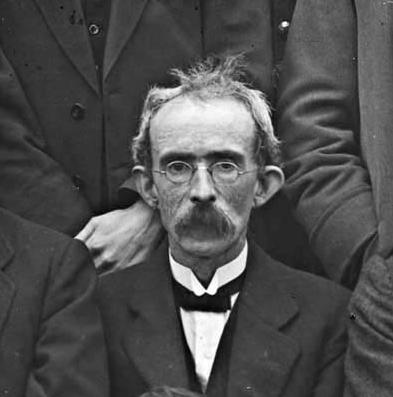11 March 1857: Thomas J. Clark, founding member of the Provisional Government of the Irish Republic, was born on this day. He was born on the Isle of Wight where his soldier father was stationed at the time. He joined the IRB in 1883 but was soon arrested in London for bombing activities and sentenced to Life imprisonment. The conditions he was held in were very harsh and his time in captivity was recalled in Clarke’s Glimpses of an Irish Felon’s Prison Life (1922). In 1896, he was one of five remaining Fenian prisoners in British jails and a series of public meetings in Ireland called for their release. He then spent some years in America after marrying Kathleen Daly and after a happy period there they returned home to Ireland in 1907.
Clarke opened a tobacconists shop adjacent to O’Connell Street and from here he helped to organize resistence to British rule. With the Home Rule Crises of 1912-14 volunteers were organised North and South on both sides and armaments flowed into the Country. Through all of this Clarke kept a low profile but behind the scences he was active in organising for a Rising. Clarke was also the main link with John Devoy, Joseph McGarrity and other supporters in the United States. As a member of the IRB Supreme Council, in late 1915 Clarke was co-opted onto its Military Council. The real work now began with a view to using the cover of the Great War to strike a blow at Britain while her interest lay elsewhere.
At Easter 1916 when the Proclamation of the Irish Republic was drawn up Clarke was given the honour of being the first signatory to place his name on the document. This was due to the recognition by his partners in the enterprise for the years of suffering and dedication he had given to the Cause. Though he opposed the ending of the Rising he accepted the result and was prepared for what was to come. He was tried before a British Military Court and found guilty. He was executed by firing squad in Kilmainham Jail on 3 May 1916.
He was buried at the Arbour Hill Cemetery (at the rear of the National Museum of Ireland, Collins Barracks) in Dublin and the plot in which 14 of the executed Leaders were buried is now a National Monument.

No comments:
Post a Comment